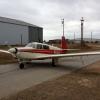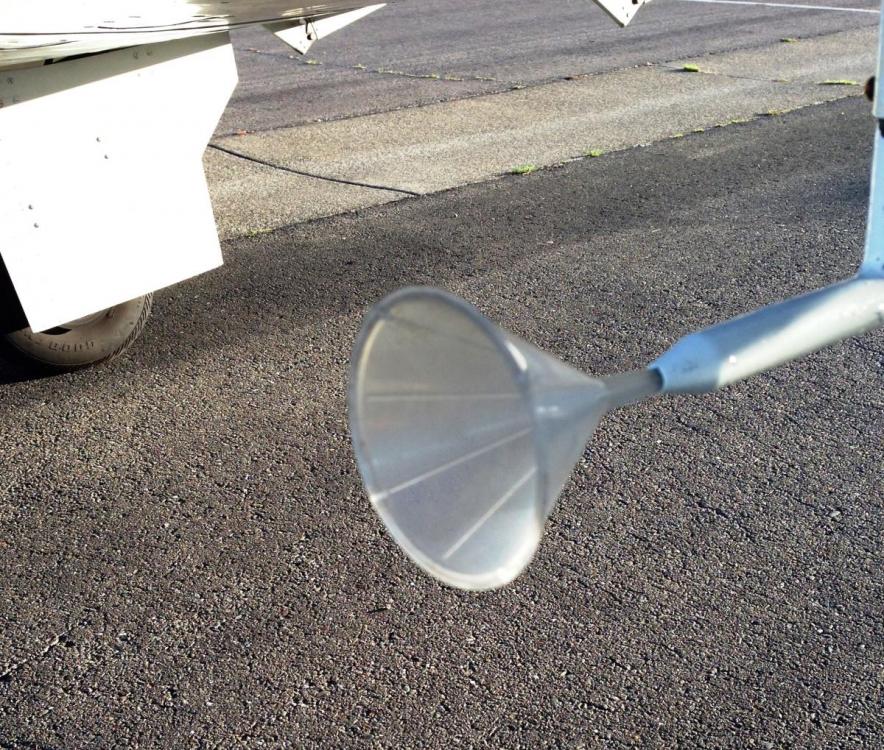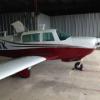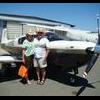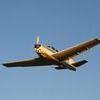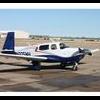Leaderboard
Popular Content
Showing content with the highest reputation on 01/25/2018 in all areas
-
6 points
-
I understand there's a Mooney owner up near Philadelphia who has poured a ton of money into an F model. Reportedly, his glass is seriously out of date, but serviceable. He's thinking seriously of going to an all Garmin panel because of advice from a dentist. Offer him your C as a "great, low-priced up-grade platform" + $10K and he's sure to go for it. @Marauder???6 points
-
I'm about 15 hours into it now - not sure if it's catching on yet or not. Most useful piece of advice so far (from someone on here -sorry I forget who) has been to divide up multi step tasks so you are always continuing your scan between the pieces. E.g. tune 1st two numbers of the frequency, check heading and altitude, then tune last two numbers, check heading and altitude, flip frequency, heading and altitude, check in with ATC, heading altitude...etc. Simultaneous aviating and other tasks are starting to take on a rythmic calmness when it's going well. It's not always going well yet. You don't actually have to walk and chew gum simultaneously, just create a system to do each in short packets in close temporal proximity.5 points
-
5 points
-
Great new youtube video on how to manage mixture and fly LOP and ROP: The most information dense filled video on the topic I can remember seeing in some time. The only real thing I would offer to add is Gami's recommend tablel on both how far to be LOP and ROP for any percent power; available here: afms gami injectors rev ir.pdf Incidentally the GAMI FAA approved mixture management is excellent guidance regardless of whether or not use Gami injectors or even if your not fuel injected. Its just that without good mixture distribution (<=0.5 GPH gami spread) an engine won't be able to fly very far LOP, if at all LOP (i.e. where all cylinders are LOP). But virtually any IO-360 can and most of the higher performance Continentals can but may require a little help. But otherwise Martin does a great job of both communicating and illustrating a wealth of information on the subject matter.3 points
-
3 points
-
I started flying long enough ago that a standard part of IFR was wearing a stopwatch on a lanyard. Shot my first NDB approach and was about a needle width off. When we broke out of the clouds we were a good mile right of the runway. My instructor said "That's why its called a non-precision approach." Short answer is it's way-way easier. Anything that makes life easier is better (in my opinion. :-) )3 points
-
Started IFR training and I am realizing I need another pot of gold or a bigger hole in my head. Does anyone fly IFR without autopilot? I am losing my mind there must be fifty or sixty things going on in the cockpit that I have to track and do and whatever. I am thinking two auto pilots 3 co pilots and a stewardess to bring me several drinks during this nightmare...2 points
-
One of the nice things about the GMA 35c and other audio panels that have recording storage for immediate playback. it gets used more the older we get.2 points
-
2 points
-
You don’t want to go to RST anyway. The FBO fees are outrageous. Cheers, Dan2 points
-
That was my answer during flight training when instructor said “throttle is stuck at mid power; cable just fell off the damn thing. How are you going to land!??” I said short final and switch off. He was like NOPE if you need to restart you can have a buildup of fuel (if mixture not on cutoff) and kaboom. Mixture also can give you somewhat finer pulse control because of ability to lean to rough but not quite cutoff versus binary off/on that starter switch does. Also ergonomically easier to leave start switch on and just fool with one knob for modulated pulses of power. We tried it and it works pretty well... definitely get you to the runway made position if you were under sufficient power when cable breaks2 points
-
I'm going to build a robot that goes to the gym for me. It will lift weights. Then it will get on the treadmill. Then it will get on the scale and it will say Hhhhmph! Then it will take a shower, come home and mow my lawn.2 points
-
J- having Desired Track and Current track displayed on your 530 right next to each other (some will out track error so there is less mental math) is a poor woman’s HSI. I’ve flown like that for years with a DG/CDI and it works well. Just like with avoiding VTF for approaches, you can enter any reasonable starting fix on an approach and get the correct “entry point” by selecting the fix that defines the leg you want to fly to in the flight plan view and then menu->activate leg. This way it will draw an intercept leg to infinity so when you do get that “5 Miles from FIXAD, fly hdg 360 cleared ILS 3 app” you just activate the fixad leg in the flight plan and intercept away. And just think - you’re not going to look at your new fancy stuff for one minute during the formation clinic ;-)2 points
-
Fly it for 25 years and your avionics will be worthless junk, but you extracted their value in good use so no complaints. If you sell your bird well before that, you take a big hit on your investment no matter the model. It's a bigger hit on a vintage bird, but is it really THAT different? There was someone selling an E model for 180k with the modern best of everything for avionics. I doubt they got anything close to that, but I also bet it brought a whole lot more than the $50k that some here suggest as the absolute cap for short body prices. Unless you're itching to sell it, don't hesitate to spend money within your means to make it into the plane you want. After a major avionics investment, my C is a magnificent traveling machine that I hope will serve me for many years to come, and it is still the great value it was when I bought it. For the total money spent, I could have bought a decent J model, but I would still have to bleed money into it to make it the bird I want.2 points
-
Seems reasonable enough to me. I would be reluctant to pull the trigger on anything that isn’t part of one of the combined systems myself. If I were looking at options in the near term I would look at the Garmin G5 and a portable mfd (e.g. 796) and make do. Add the autopilot when you can and then expand as you are able. If Dynon is successful Garmin will have a competing product. I would bet $ that it will be built on the same CAN bus protocols that underly the G5 and the GFC500 installation. i’ve said it elsewhere- Aspen, Avidyne, JPI, other stand alone instrument companies are not in a good competitive position. I wouldn’t put any $ into Aspen as I don’t believe they have a long term viable business model. Edited to add- I hope i’m wrong about Aspen et al- the companies all provide tremendous value to GA2 points
-
They don't refer to it as the hardest rating to get for nothing! It just takes time and although IFR training with an AP is very valuable its even more critical to have the skills when the autopilot fails or becomes inop from a vacuum failure. But don't worry, before you're done you'll even be able to fly it with your Attitude and DG covered without the AP!2 points
-
It does from the standpoint that all our fuel systems are designed to run richest at full WOT redline. Consequently mixture is not exactly linear with MAP and should be richest at redline MAP. Further, if one is reducing MAP because out of concern for higher CHTs, they'll see better cooling by keeping the the MAP up and reducing the RPM. Here are a couple articles that will go into more detail: First, https://www.avweb.com/news/pelican/182104-1.html this is probably the best example I can think of because it discusses what happens when you make any one change in isolation - discussing mixture, RPM and MAP one at a time and how they change the effective timing of peak ICP. It all adds up to make the point that greatest efficiency comes from WOT MAP and to use RPM to reduce power or speed if need be, not MAP. Another article that speaks to the efficiency argument directly is this one by Mike Busch. : https://www.savvyaviation.com/wp-content/uploads/articles_eaa/EAA_2012-10_flying-efficiently.pdf I somewhat stated the MAP effect on mixture backwards since virtually everything you'll read will say it the other way around, that the engine is designed to be most rich at WOT. So you might also look at your own EGT/TIT data from reducing MAP from WOT maintaining full rich and see EGT go up with MAP reductions. But both of the first two articles above make the point quite well. But perhaps efficiency make a more compelling reason to keep MAP high and just reduce RPM in climb out since the second article clearly shows by contrasting two different identical power levels with the same FF that the higher MAP results in lower EGT and CHT which equates to larger detonation reserves and lower and ICP - all good things. (although we got into this topic just on the basis of reducing power from 100%, my corollary point was to only reduce RPM is wanting to reduce power) You are probably aware of Bob Kromers article years ago about climbing all Mooney's at WOT and inn this article he specifically talks about climbing WOT in the 252 all the way to top of your climb; although no real science here but largely good advice from a past well respected Mooney test pilot. http://www.mooneypilots.com/mapalog/M20K252_evaluation_report.htm I don't agree with all that is said but he has the right concept about how the engine was designed to run coolest and most efficiently.2 points
-
Well, it depends. Auto-pilots can fly IFR without much training. Pilots with an IFR rating can fly steam, glass, or partial panel, but need a lot of training/practice/proficiency. Stewardesses are distractions which require the engagement of the autopilot.2 points
-
That is so nice I'd hardly mess with it. Maybe change the EDM700 to an EDM800 to get MP, RPM and % power for very low cost. Then change the transponder to a GTX345 for ADSB in / out and AHARS for a 796/iPad (backup AH). Don2 points
-
This mentality saved me when 2 hero's pulled me from a burning Mooney. Thanks Bobby, Stan.... Glad you two were not among the reported dozen or so just wanting to get a good video to post on Youtube.2 points
-
Hello everyone, Cecilia Henderson again. First let me say thank you for the outpouring of condolences we have received from all of you. We miss Jerry very much and your kind words soothe our otherwise miserable souls. Now for an update. There is a lot of interest in purchasing our intellectual properties which leaves me very optimistic that Brittain will live on in some form or fashion long after the "Walters" have left the building. Doing all I can from here to insure a quality buy and ongoing support for the Brittain product line. We have put together a prospectus and are entertaining all offers over $40,000.00 for the next few weeks then we will make a determination of which deal is the best fit for all involved. If you are interested in purchasing a small autopilot company give me a call or drop me an email. We are also selling our machine/metal shop separately from the IP. Meanwhile we are in full liquidation mode as our property is leased and we must vacate the building by April 1st. We have about 60 seals for the Mooney aileron and rudder servo assemblies which we are liquidating as "seal kits". Many of you remember a time when all Brittain offered was a seal kit that allowed you to repair your own servos. Although the FAA frowns on this approach our situation has obviously changed so get them while they are available. Each "kit" comes with a seal, safety strap, O-ring and new compression nut. Each will also come with a four page specification on how to re-assembly the unit. We are asking $100.00 each for these kits, credit card or Paypal only. Please do not try to change out your seals while the servo is still installed in the airframe. Proper removal of the servo followed by re-build and re-installation is recommended for best results. We also have a few "button valves" (on/off yoke valves) and pilot valves in repaired state which we are discounting and selling "as removed" (with no maintenance release) and if you already have an Accu-Trak system (i.e. if you already have a servo control valve P/N 20464-200) and are interested in adding heading command (B-12 Accu-Flite) we have one remaining system, less the DG, in new production (DG Adaptor, Accu-Flite on/off switch and cable, installation manuals, flight manuals and STC included. G502A directional gyro not included). Sorry fellas but we sold out of the step servo seal so they are not currently available. All hope is not lost though as the tooling has been secured and new ownership can bring this repair line back up within a matter of weeks upon close of a deal, so once again, please be patient with us. Thanks again for all the kind words and the endless support the Mooney community provides us. Please don't hesitate to reach out to us during this transition, if we can assist you we will be happy to do so. Very Sincerely, Cecilia Henderson1 point
-
I’ve had my 70C for many years I know it’s a solid airframe 20 plus years in my heated hangar. As the years passed by and as I had the (cash) I’ve done many upgrades spreader out. The engine, prop, bladders, speed mods, windows, paint , interior, S-etc 30, gpss and just last year I put another 30k into my panel, this time to get ADSB compliant and finally get a wass gps plus some other goodies. I did this all for me! It’s what I,like to do. My wife and I love the little C, great IFR cross country and very economical to operate. I’m almost done building my 200hp RV -7 and originally thought I’d sell my Mooney once completed but it’s been such a joy to own and fly cross country we decided to do the upgrades last year and keep it.1 point
-
I think after we get reasonably priced autopilots the GPS navigator is definitely the big gap in the somewhat budget panel market. $10,000 new for either the Avidyne or the Garmin is a serious amount of cash. Sure, I'd love to upgrade to the new fancy GPS models. But already having a 530W and 430W means that the $20k+ to do that is not remotely a good use of funds.1 point
-
Avidyne is private equity owned- deal was done before the G1000 was announced and Avidyne was the only game in town in Cirrus aircraft. Investment timelines are such that I doubt that the current owner would have much interest in buying another company. If instead we look at Avidyne as the seller and Aspen the buyer, the value of Avidyne is contingent on the timeline and the success of a retrofit glass product. Avidyne charges big $ for its PFD extended warranties and repair business of that equipment. It's my impression that the Entegra systems don't have a strong reputation for quality and longevity. If Dynon (or Garmin) offers a quality retrofit product that would replace the Avidyne equipment, the long term viability of Avidyne's business in at risk and it will be difficult to pay a high enough multiple for Avidyne. I believe things are lining up as Dynon as the budget player with Garmin at the high end. Garmin has everything; Dynon does not have a GPS IFR navigator. Dynon does all its demo panels and panel photos with Avidyne navigators even though the Dynon equipment is compatible with Garmin as well. The rationale for Dynon's decision is obvious. I believe it makes more sense for Dynon to do one of two things- and it's a fairly straight forward make or buy: Buy Avidyne: use the navigator to create an integrated panel just like the forthcoming Garmin solution that integrates a branded navigator Build an IFR Navigator: The WAAS antenna inside the Dynon HDX system is good enough to provide a position source for ADSB out. It doesn't seem like a big stretch to me that Dynon could upgrade the software in the HDX system to add GPS approach capability and to get it certified. If Dynon goes down path #2... assuming they get the system STC'd eventually... then Avidyne is toast altogether. That's a big IF. I don't have any knowledge of the development path at Dynon, nor do I have any inside information about any company mentioned above that affects my analysis.1 point
-
1 point
-
You can also have your airspeed indicator calibrated. Ours was off by as much as 5 or 6 KIAS depending on the speed. You may be going faster than you think.1 point
-
I appreciate the words of encouragement. I am going to pursue this one step at a time along with running a business, changing equipment, and being married. I've decided to fire the "flight Attendant" tonight is step two1 point
-
Just keep in mind that every pilot the Air Force turned out learned to fly IFR without an autopilot (neither the T37 nor the T38 had one). And the T37 didn't even have an HSI (and one VOR, one DME, no glideslope). If they can do it, you can do it. If just takes time, incremental steps, and patience. Learn to maintain aircraft control and fly headings. Trim, trim, trim. Then how to intercept and track courses. Trim, trim, trim. Then how to hold. Trim, trim, trim. Then altitude changes. Then... You get the idea. You don't have to be able to do it all the first day. You can do it.1 point
-
The idea is to engage the autopilot...not get engaged to the stewardess. Er..... we all mean "female flight attendant", right? The term "Stewardess" has long ago been swept out of the dictionary by the politically correct crowd. As a matter of fact, "stewardess" has been relegated to a part of the gradation of the adjective "Stupid" as in: stupid, stupider, stewardess. Danm good thing it isn't in common use today!1 point
-
In the SR22 I flew for 4.5 years the owner backed his SR22 into his convertible Jaguar. Put a small bend in left flap. Worse it was just before I was going to fly to Cape Cod from Atlanta. Ended up having to take an Arrow instead.1 point
-
1 point
-
1 point
-
It's fixed. $417 from Lasar. I did the work, supervised by an A&P. It was not the most enjoyable thing I've ever done.1 point
-
The snowmobile engines were the original suggestion, IIRC, when Bede first started selling the kits. It seems like BD-5s these days have been getting all kinds of crazy engines installed. I'd found another vid with one with a Honda four-cylinder which looked like it worked quite well. This one was built by a friend's uncle and had a MiG-ish nose to accommodate a radiator for a water-cooled four-cylinder.1 point
-
You must learn patience Padwan if you are to learn the ways of the force. Everyone gets swamped when they first start IFR. Just takes time to get used to it. Yes, lots of folks have learned sans George, and a lot of the older hands probably did it with VORs, DMEs and ADFs if they were lucky.1 point
-
If I remember reading correctly, when the Crosley powered Mites started having problems, Mooney found, upon inspection, that the delivered engines did not conform to the design specifications. Thus the move to Continental and Lycoming variants.1 point
-
I like to look at fuel required for a trip, not FF payload as it tells you very little. There are masochists that like spending more than 5hrs in a small plane, but I am not one of them. I agree the PA28 is a capable and uncomplicated platform. It's also quite rare that one has a significant payload advantage over any Mooney. Your buddy's PA28 has a 40lbs more useful than my bird, but after 3 hours in cruise at similar fuel burns I will be 100 miles ahead of him. He's going to need about 43 gals to 450nm giving him 842lbs of payload. To do the same trip with reserves I need 40 leaving me 820lbs for the payload. So while he can take 22lbs more in the cabin, he'll be in the hour for almost a full hour longer and burn more fuel. Indeed it's an impressive performance for a little piper, but hardly worthy of much envy from a Mooney owner. The above is most favorable to the PA28. As the distance increases, the numbers get worse and worse for the little piper.1 point
-
1 point
-
1 point
-
Yep. I flew mine all over the southeast and had a ball doing it. My wife and I enjoy our 4 place Mooney, but sometimes it's really nice to fly places with no excuse needed for going by yourself. You'll find that every time you stop somewhere you'll empty out the FBO and meet all sorts of new friends curious about who is flying the "model airplane".1 point
-
I'm sorry, but that's some of the worst advice ever posted on MooneySpace. It might be more relevant for a newish long body in the $300K+ range, but for 5 figure vintage Mooneys, get a pre-buy from a reputable shop.1 point
-
That snorkel that is attached to the air inlet is open to the high pressure zone behind the prop? Do you know if it will apply "boost" to the engine? If that could increase M.P. by 2in that would be awesome. I'll start drilling holes tonight. I have been thinking of a ram air system that works unlike what we have now. After seeing the streaking on the side of the cowl I was wondering if putting a scoop that protruded maybe a inch to the side for induction if that would produce worthy gains.1 point
-
Jolie, panel looks great. For safety reasons, however, and because they have become so inexpensive, I wouldn't fly any serious IFR until you install a second backup attitude indicator in place of the turn coordinator. While we train for needle, ball, and airspeed, there is now no need to put ourselves at additional risk by flying without a backup AI to use in an emergency.1 point
-
1 point
-
McFarlane recommends that these cables ought to be considered to have a finite service life approximately that of the engine TBO. (I replaced all 3 of mine though they were not original, the mixture was too stiff when cold, there seemed to be excessive play in the prop control cable. The throttle was 20 years old.) https://www.mcfarlaneaviation.com/section/services/custom-engine-controls/1 point
-
I thought I had raved about it Well here goes... I know that engine instruments are not included in the Aviate, Navigate, Communicate trinity. But those three really only come into play in the airport/runway environment or on an approach/hold/etc. The vast majority of the hours I spend in the left seat of my Mooney, "George" is doing the flying. And so with the track, heading, altitude, navigation, all handled... what I'm left to to is manage the power. So I find myself spending the vast majority of my time watching the EDM-900. I'm checking temps, fuel flow, fuel quantity, oil pressure/temp, % power, etc. So having the EDM-900 engine monitor in my direct field of view is exactly the best place for it. And the few other pilots who have flown my 252 have all commented that they think my EDM-900 placement is the best they've ever seen. Now this is only possible because of the Aspen. One of the benefits of glass is the consolidation of the full 6 pack into effectively two instruments. The AI/ASI/VSI/Alt/TC on the top and the DG/CDI/HSI/Nav on the bottom. With all of those instruments shrunk down into a single Aspen panel, there is room for a proper graphical engine monitor within the pilots primary scan. I'd never flown glass prior to rolling my 252 out of the avionics shop with it's new panel. It took me all of one flight to realize this is a game changer and wonder about the 500 Mooney hours with the old steam gauges and what took me so long to get it done right. I'll throw an invitation out to anyone on this forum to come ride left seat in my 252 and see if you don't agree.1 point
-
Gear down Undercarriage verified Make sure the gear is down Put your hand on the gear switch and look at it again Surely you put the gear down1 point
-
1 point
-
I figure on 155 kts high up and 150 down below 6000' @ 11GPH. Those speeds sound about right.1 point




